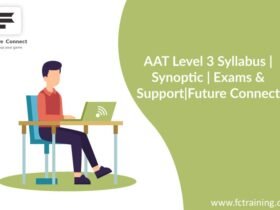Due to the rising expense of education, particularly higher education and professional training, it is getting more and more difficult for parents to save aside enough money for their children to pursue the higher education they desire. An education loan will most likely be the best option in this situation. Banks provide education loans up to Rs 20 lakhs for a variety of programs offered by reputable colleges and educational institutes in India and overseas at extremely low interest rates. Banks even provide female students an interest rate discount of up to 0.50%.
Deserving and meritorious students who want to pursue higher education can do so with the help of education loans. Interest rates for student loans can differ from bank to bank. The education loan interest rate is currently between 10% and 15%.
Tax Benefits:
Under section 80E of the Income Tax Act, the person who is paying the interest on an education loan for himself, his children, his spouse, etc. may be eligible for a tax return. Furthermore, the rebate has no upper limit. He may deduct the whole amount of interest from his taxable income. He has a maximum of 8 years to make this deduction. It should be noted that there is no income tax credit available for principal payments.
There are additional fees than interest:
When taking out an education loan, there are numerous other fees that need to be taken into account as well. These fees include administrative fees, processing fees, late payment fees, and more. It is crucial to think about and account for all of these costs before applying for a loan in order to determine the loan’s true cost.
Only after course completion, the repayment starts:
The actual repayment of an education loan begins once the student has completed the course for which the loan was requested or has found employment. The borrower may employ the moratorium period that banks also give. The length of the course plus an extra six months after finding work. Up to a total of one year after the course’s conclusion, is the moratorium period for education loans.
During the course period, simple interest on education loans is charged:
Banks simply assess a simple interest rate during the loan’s course period. During this time, no loan repayment via EMI is necessary. Once the course has been successfully finished, the reimbursement will begin. Additionally, the benefit of a moratorium period is provided to the pupils.
Third-party guarantee and collateral are required for education loans over a certain amount:
For school loans up to Rs 4 lakh, there is no need for collateral or third-party guarantees. Banks, however, need a third-party guarantee appropriate to the bank for loans of more than Rs 4 lakh and up to Rs 7.5 lakh. The bank requires collateral for student loans greater than Rs 7.5 lakhs.
Students from low-income families are eligible for education loan subsidies:
If the family’s annual income is less than Rs. 4.5 lakhs, students from the Economically Weaker Section (EWS) are eligible to receive education loan subsidies from the Central Government. This interest subsidy is only accessible while the student loan is in moratorium. The student must pay back the lending bank their principal and interest after the moratorium period is complete.
Education loans do not raise the financial burden on parents:
Education loans do not add to the financial load on the parents because the student is responsible for loan repayment. After finishing his or her studies, the borrower can begin loan payments.
An Education loan can help you build credit score:
Your credit score will rise if you make regular payments on your student loans. Your loan repayment history and financial future will both benefit if you return your student loan on time.








Leave a Reply